
What’s Hot in Food & Cooking: Top 10 Staples for Any Vegan Kitchen
Each month we feature something new and cutting edge for the culinary world: either an app, online source, or a link to the latest gadget. This month, in keeping with the theme of “Veganuary,” we are talking about the top 10 staples for any vegan kitchen.
Each professional chef or home cook must have his or her favorite ingredients in their kitchen. To determine what the most important ingredients a vegan home chef should have on hand in their kitchen, the following list has been compiled with the help of an assortment of professionals. Many of the chefs that contributed their preferences couldn’t stop at only ten ingredients but they all included these staples:
1. Dried / Canned Beans
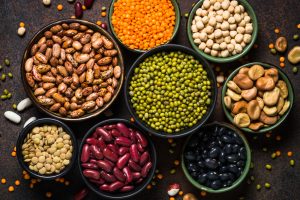 This was the top pick amongst the chefs that were polled. It is perhaps the most versatile ingredient in a vegan pantry. Beans are used as a protein and base in many recipes. They can be used as thickeners in soups and the liquid canned beans are packed in, aquafaba, is a wonderful vegan substitute for eggs or whipped cream.
This was the top pick amongst the chefs that were polled. It is perhaps the most versatile ingredient in a vegan pantry. Beans are used as a protein and base in many recipes. They can be used as thickeners in soups and the liquid canned beans are packed in, aquafaba, is a wonderful vegan substitute for eggs or whipped cream.
2. Grains & Pastas
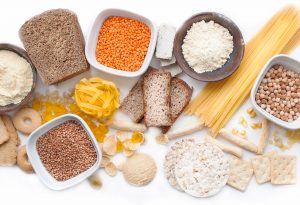 Both grains and vegan pastas should be part of the home pantry as they can be used alone or as ingredients for a variety of vegan meals. Pastas serve as a base for stews and sauces, whereas grains can serve the same purpose and they can also be incorporated into baked goods, roasted vegan loaves and patties, as well as used in soups.
Both grains and vegan pastas should be part of the home pantry as they can be used alone or as ingredients for a variety of vegan meals. Pastas serve as a base for stews and sauces, whereas grains can serve the same purpose and they can also be incorporated into baked goods, roasted vegan loaves and patties, as well as used in soups.
3. Assorted Flours
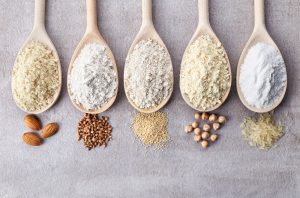 Another pantry staple that couldn’t have been emphasized more was the importance of having an assortment of flours, made from grains, seeds, and nuts. The array of different recipes for baked goods, porridges, and breads that can be made with these are astounding.
Another pantry staple that couldn’t have been emphasized more was the importance of having an assortment of flours, made from grains, seeds, and nuts. The array of different recipes for baked goods, porridges, and breads that can be made with these are astounding.
4. Nutritional Yeast
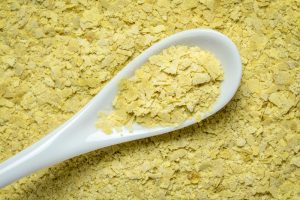 Don’t confuse this with the yeast that is used in baking. Nutritional yeast imparts a nutty, somewhat cheesy flavor to the foods it is added to and is an intrinsic ingredient in nut cheeses and sauces that are mimicking dairy sauces. It is also enjoyed simply by shaking it over vegetables, popped corn or onto scrambled tofu.
Don’t confuse this with the yeast that is used in baking. Nutritional yeast imparts a nutty, somewhat cheesy flavor to the foods it is added to and is an intrinsic ingredient in nut cheeses and sauces that are mimicking dairy sauces. It is also enjoyed simply by shaking it over vegetables, popped corn or onto scrambled tofu.
5. Seeds & Nuts
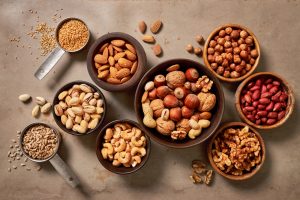 Ok, so these are really two different things but many seeds are often used like nuts in cooking and vice versa. Both impart protein and flavor to the diversity of foods a vegan can create in their kitchen. Nuts can be soaked and pureed to become the base of sauces or used in the preparation of nut ‘cheeses’. Seeds are often ground into butters that resemble a paste and for those that can’t have peanuts, sunflower butter is a great alternative.
Ok, so these are really two different things but many seeds are often used like nuts in cooking and vice versa. Both impart protein and flavor to the diversity of foods a vegan can create in their kitchen. Nuts can be soaked and pureed to become the base of sauces or used in the preparation of nut ‘cheeses’. Seeds are often ground into butters that resemble a paste and for those that can’t have peanuts, sunflower butter is a great alternative.
6. Oats
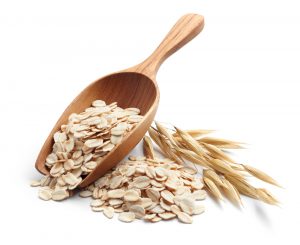 This one was a bit of a surprise that it was consistently mentioned on its own and not included with other grains. Oats come in many forms and can be used by themselves as a porridge or they can be ground into flour and baked with. In their different varieties they can be used in breads, cookies and cakes, as well as in savory loaves made to replace meatloaves. They can also be used in raw baking and cooking.
This one was a bit of a surprise that it was consistently mentioned on its own and not included with other grains. Oats come in many forms and can be used by themselves as a porridge or they can be ground into flour and baked with. In their different varieties they can be used in breads, cookies and cakes, as well as in savory loaves made to replace meatloaves. They can also be used in raw baking and cooking.
7. A High-Speed Blender
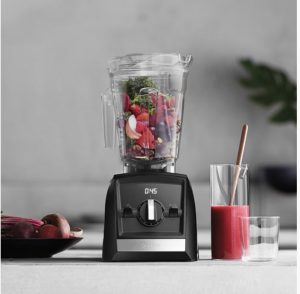 Although this isn’t a food item every single chef questioned had this on their list of must-haves for a vegan kitchen. High-speed blenders can range in price from $100 to over $1000 depending on strength, brand, personal or professional. Some common brands that are readily available to the home consumer are: Vitamix, Ninja, and Blendtec. Having this versatile piece of equipment in your kitchen will allow you to grind your own flours, make sauces, soups, smoothies and more.
Although this isn’t a food item every single chef questioned had this on their list of must-haves for a vegan kitchen. High-speed blenders can range in price from $100 to over $1000 depending on strength, brand, personal or professional. Some common brands that are readily available to the home consumer are: Vitamix, Ninja, and Blendtec. Having this versatile piece of equipment in your kitchen will allow you to grind your own flours, make sauces, soups, smoothies and more.
8. An Assortment of Fresh and Frozen Vegetables and Fruits
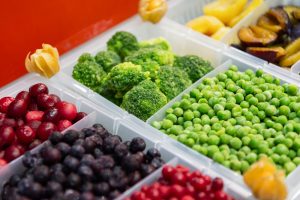 Having access to an array of fresh seasonal vegetables and fruits was also on each list in the survey. Know what is grown in your area and find a local produce vendor that sells organic locally-grown produce. To supplement the variety, freeze vegetables and fruits when in season for use throughout the year or purchase frozen vegetables and fruits to supplement what is available fresh. Take it one step further if you are inclined and plant a small garden to grow your own produce.
Having access to an array of fresh seasonal vegetables and fruits was also on each list in the survey. Know what is grown in your area and find a local produce vendor that sells organic locally-grown produce. To supplement the variety, freeze vegetables and fruits when in season for use throughout the year or purchase frozen vegetables and fruits to supplement what is available fresh. Take it one step further if you are inclined and plant a small garden to grow your own produce.
9. Fresh and Dried Herbs and Spices
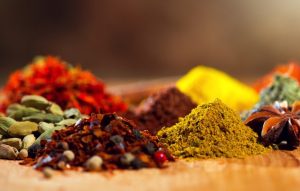 The greater the variety you have on hand, the greater the variety of flavors you can impart to your foods. Growing a small herb garden is easy and can be done in small pots on a windowsill even in the smallest of apartments. Buying quality dried herbs and spices can be done locally or online. Dried herbs and spices are best stored in glass containers with tight-fitting lids. Fresh herbs should be used as soon as possible or they can be chopped and frozen into cubes with a little oil for future use. When buying online, familiarize yourself with which herbs and spices need kosher supervision as many whole or dried and ground herbs and spices do not require a hechsher. A great place to check this information is with the CRC app, available for a variety of handheld devices.
The greater the variety you have on hand, the greater the variety of flavors you can impart to your foods. Growing a small herb garden is easy and can be done in small pots on a windowsill even in the smallest of apartments. Buying quality dried herbs and spices can be done locally or online. Dried herbs and spices are best stored in glass containers with tight-fitting lids. Fresh herbs should be used as soon as possible or they can be chopped and frozen into cubes with a little oil for future use. When buying online, familiarize yourself with which herbs and spices need kosher supervision as many whole or dried and ground herbs and spices do not require a hechsher. A great place to check this information is with the CRC app, available for a variety of handheld devices.
10. Tofu, Tempeh, TVP and Seitan
So these are really all a bit different but needed to be mentioned here as using any of them will add texture, flavor and nutritional value to your vegan meals.
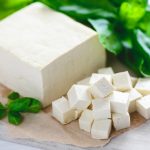 Tofu, also known as soybean curd, is sold commercially and requires a hechsher to be kosher. It is made from coagulated, condensed soy milk and is rich in protein.
Tofu, also known as soybean curd, is sold commercially and requires a hechsher to be kosher. It is made from coagulated, condensed soy milk and is rich in protein.
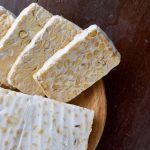 Tempeh is also sold commercially packaged and requires a hechsher. Being a fermented food it not only imparts a nutty earthy flavor to foods, it may also have health benefits (please consult a licensed medical professional for more information).
Tempeh is also sold commercially packaged and requires a hechsher. Being a fermented food it not only imparts a nutty earthy flavor to foods, it may also have health benefits (please consult a licensed medical professional for more information).
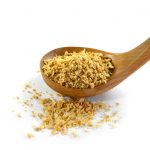 TVP (textured vegetable protein) is a product made from soy flour and is sold commercially in a variety of forms. It also requires a hechsher. TVP is most often sold dehydrated and when added to soups, stews or sauces has the texture of ground meat. It adds texture and volume to vegan recipes, as well as additional protein.
TVP (textured vegetable protein) is a product made from soy flour and is sold commercially in a variety of forms. It also requires a hechsher. TVP is most often sold dehydrated and when added to soups, stews or sauces has the texture of ground meat. It adds texture and volume to vegan recipes, as well as additional protein.
 Seitan is next level in vegan cooking when the texture of meat is being mimicked. Used as a replacement for beef or poultry in many recipes, its mild flavor allows it to absorb the flavors of the recipes it is being used in. Although sold commercially, it is easy to make and store at home.
Seitan is next level in vegan cooking when the texture of meat is being mimicked. Used as a replacement for beef or poultry in many recipes, its mild flavor allows it to absorb the flavors of the recipes it is being used in. Although sold commercially, it is easy to make and store at home.
Easy Peasy Homemade Seitan
Based on a recipe from Isa Chandra Moskowitz
Makes approximately 6 cups
Ingredients
2 cups vital wheat gluten
¼ cup nutritional yeast
2 tablespoons all-purpose whole wheat flour
1 cup cold vegetable stock
½ cup tamari or coconut aminos
2 tablespoons tomato paste
1 tablespoon olive oil
2 teaspoons minced garlic
Cooking Broth:
12 cups vegetable stock (mock chicken stock works well too)
½ cup tamari or coconut aminos
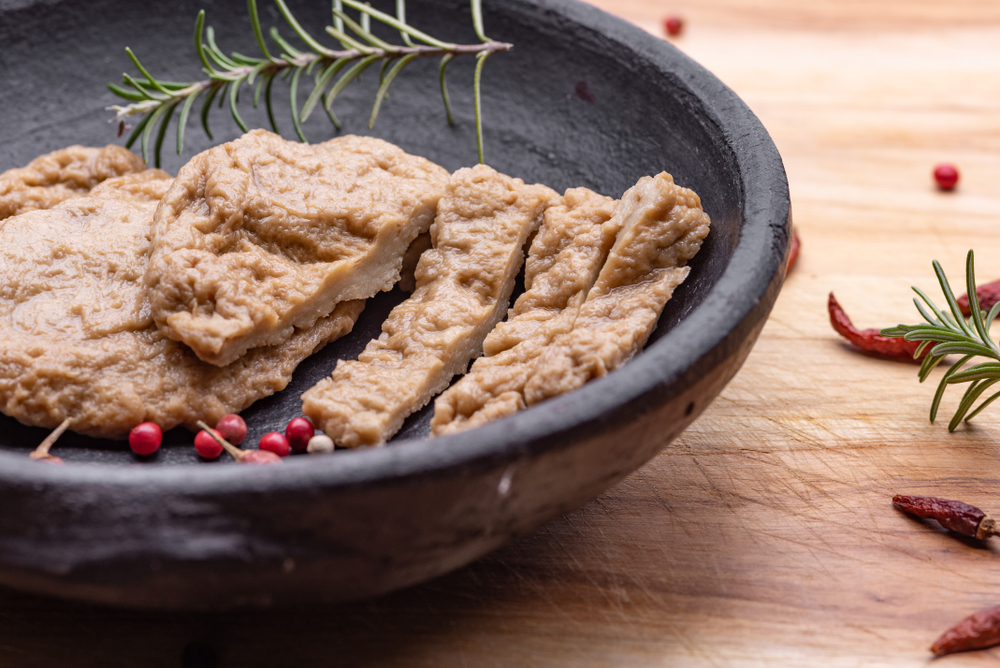
Step by Step Instructions
Step 1
In a large bowl mix together the vital wheat gluten, nutritional yeast and the 2 tablespoons of whole wheat flour.
Step 2
In a separate bowl mix together the wet ingredients including the minced garlic.
Step 3
Pour the wet ingredients into the dry ingredients and knead the mixture into a dough. Continue kneading for about 5 minutes. Let the dough rest.
Step 4
In a large stock pot mix together the 12 cups of stock and the ½ cup of tamari or coconut aminos.
Step 5
Roll the dough into a large log. Divide this into 6 equal pieces.
Step 6
Place the pieces of dough into the COLD broth in the stock pot.
Step 7
Place the lid over the pot in a way that allows for steam to escape, and bring the stock to a boil.
Step 8
When the liquid has reached a boil reduce the heat to allow it to simmer for an hour. Turn the pieces of seitan occasionally throughout this time.
Step 9
After an hour of simmering, remove the pot from the heat and let the liquid and seitan cool completely.
Step 10
Once cool the seitan is ready to be used in recipes. It can be stored covered in the broth in a sealed container in the refrigerator for about five days.

Related Articles
Related
Culinary Quickies March 2023
Reader Question: How do I make clear chicken broth/stock? Answer: Let’s start by defining both stock and broth. According to classically trained chefs, stock is made from the bones with a few vegetables to season the liquid which when cooled will take on a gelatinous...
What’s Hot in Food & Cooking March 2023
In today's world of daily increasing food prices it is important to learn how to adapt our favorite recipes and to create weekly meal plans to keep the cost of food within our budgets. The best way to figure out your weekly food budget is to assess your current...
Plant Based and Kosher – Esther’s Feast
Plant Based & Kosher: Esther's Feast Recipes for a fabulous pareve Purim seudaby Shoshana IsaacsonUNORTHOBOXED Magazine Food EditorOne of the mitzvot of Purim is to have a festive meal. What better way to do this than to model our meal after the feast that Esther...
